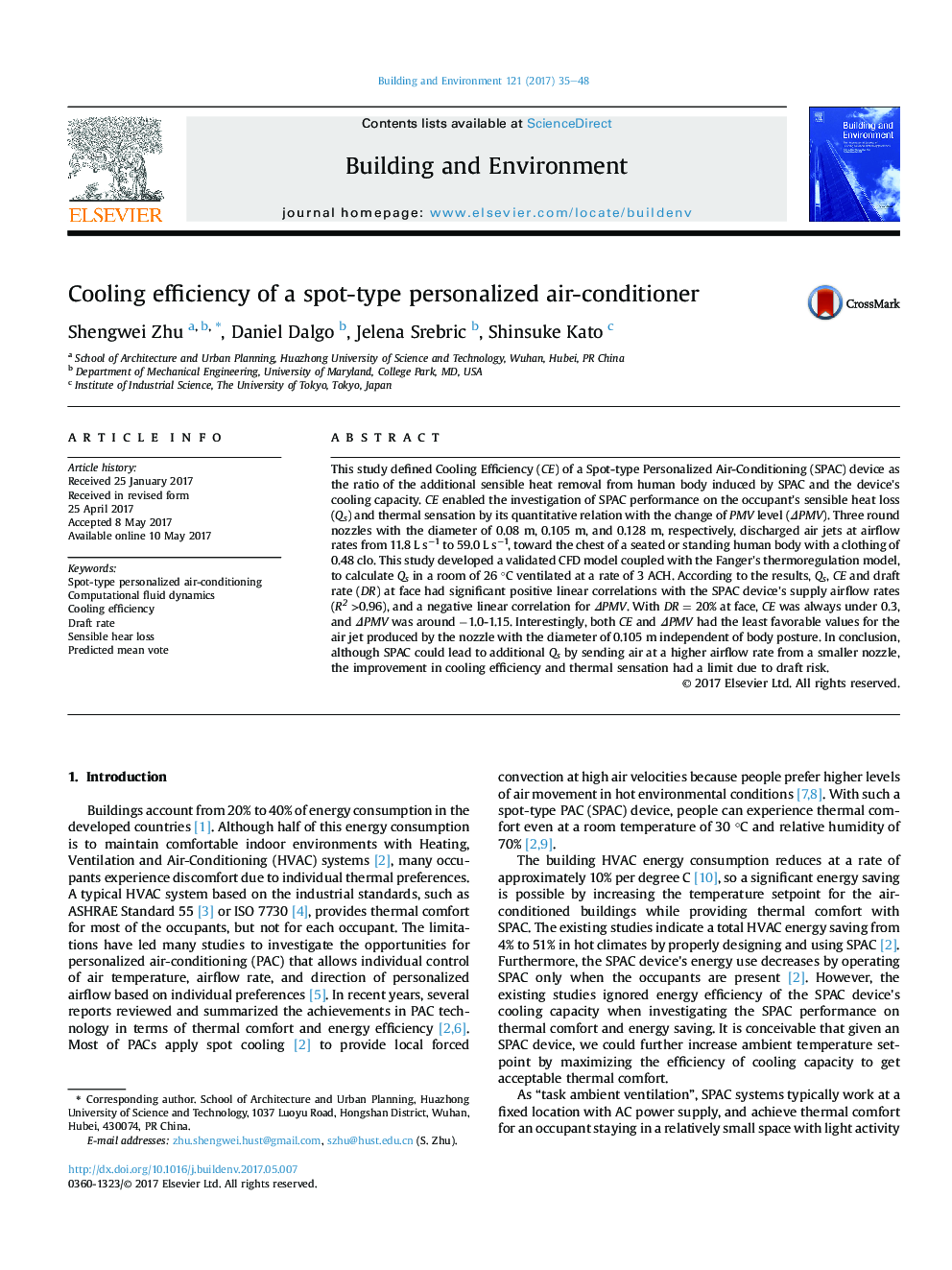| Article ID | Journal | Published Year | Pages | File Type |
|---|---|---|---|---|
| 4911502 | Building and Environment | 2017 | 14 Pages |
Abstract
This study defined Cooling Efficiency (CE) of a Spot-type Personalized Air-Conditioning (SPAC) device as the ratio of the additional sensible heat removal from human body induced by SPAC and the device's cooling capacity. CE enabled the investigation of SPAC performance on the occupant's sensible heat loss (Qs) and thermal sensation by its quantitative relation with the change of PMV level (ÎPMV). Three round nozzles with the diameter of 0.08 m, 0.105 m, and 0.128 m, respectively, discharged air jets at airflow rates from 11.8 L sâ1 to 59.0 L sâ1, toward the chest of a seated or standing human body with a clothing of 0.48 clo. This study developed a validated CFD model coupled with the Fanger's thermoregulation model, to calculate Qs in a room of 26 °C ventilated at a rate of 3 ACH. According to the results, Qs, CE and draft rate (DR) at face had significant positive linear correlations with the SPAC device's supply airflow rates (R2 >0.96), and a negative linear correlation for ÎPMV. With DR = 20% at face, CE was always under 0.3, and ÎPMV was around â1.0-1.15. Interestingly, both CE and ÎPMV had the least favorable values for the air jet produced by the nozzle with the diameter of 0.105 m independent of body posture. In conclusion, although SPAC could lead to additional Qs by sending air at a higher airflow rate from a smaller nozzle, the improvement in cooling efficiency and thermal sensation had a limit due to draft risk.
Related Topics
Physical Sciences and Engineering
Energy
Renewable Energy, Sustainability and the Environment
Authors
Shengwei Zhu, Daniel Dalgo, Jelena Srebric, Shinsuke Kato,
